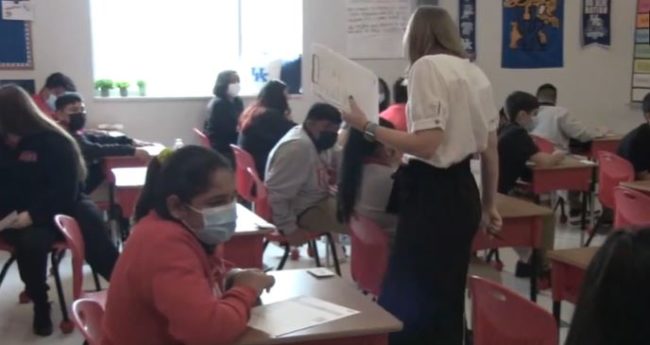09.16.21The First Turn&Talk of the Year in Hannah Cook’s Classroom

Turn and Talk is a powerful tool in the classroom. Done well it can cause the room to crackle with energy and give students the opportunity to rehearse and develop ideas in a smaller setting before sharing them with the whole group.
Watch, for example, how the energy in these three Turn&Talks (that’s Denarius Frazier, BreOnna Tindall, & Christine Torres, you’re watching… the videos can all be seen in TLAC 3.0) create positive energy and build a norm of engaged participation.
Again, part of what you’re seeing is norms the teachers have established. Students jump into Turn &Talks with enthusiasm because they know everyone else in the room is going to do so as well: all-in- without hesitation or skepticism. They’re not worried they will turn and say something to a partner who will roll her eyes or ignore what they said. Students deserve to discuss ideas in that kind of setting!
But there is a lot planning and design required to make your Turn&Talks sing like that. That’s why I’m so excited to share this video we shot a few weeks ago in Hannah Cook’s classroom at Memphis Rise Academy, in Memphis TN. It’s her very first Turn&Talk of the year and you can see her building up the component parts of the Turn&Talk intentionally.
Notice that her students have written responses first before she tries her first Turn&Talk. The first time the do a Turn&Talk in her room she knows they’ll have plenty to say because they will have written about it in advance. They’ll all have something to say the moment the Turn&Talk starts.
She does a quick bit of trouble shooting to make sure everyone knows who their partner is. Then she scripts the beginning. She ‘manages turns’ so students know who will go first. She’s eliminated one more cause of hesitation and awkwardness so the first time they try Turn&Talk it feels crisp and energetic and she is able to establish a highly visible norm of energetic participation form the outset.
Next she focuses on the importance of listening as much as talking. Message: Your role as a student is to listen for areas of agreement. Afterwards, she’ll ask students to write them down. This emphasizes how important listening and consensus building are. It also means that students heard and important. Their peers will talk about how much they agreed with and valued their ideas. This will build a sense of value and belonging.
